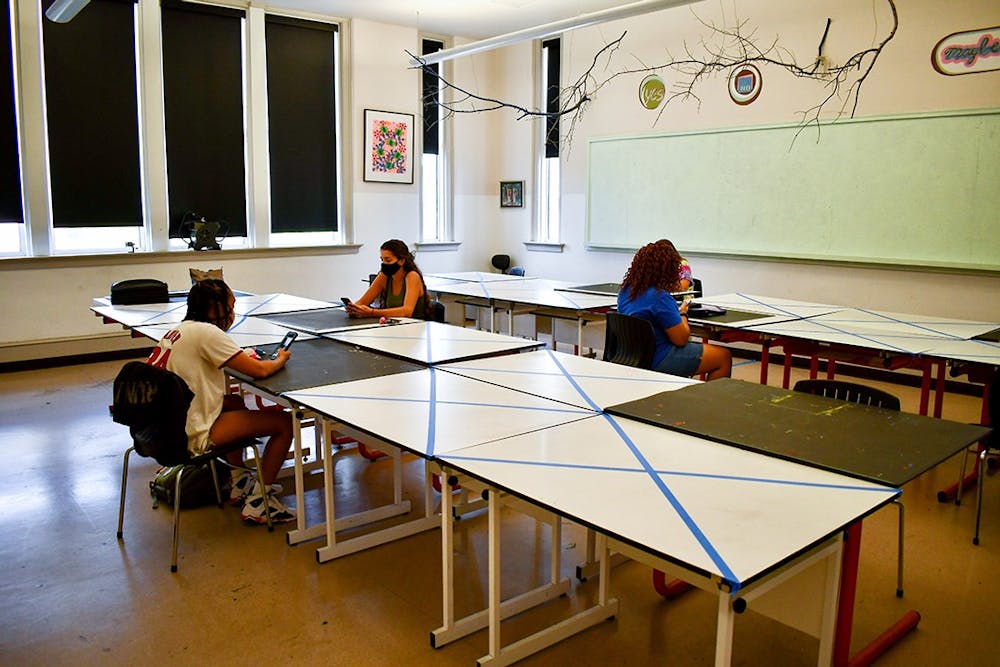Traditionally, University 101 has been a class that provides first-year students guidance and community during their transition into college. This year, however, the class is taking on a new form, with some sections being taught in-person, some hybrid and some completely online.
Peer leaders and professors said they are trying to make sure first-year students can still connect and do activities, even in a virtual or socially-distanced setting. Some are finding student engagement is the same, while others are struggling to connect.
Third-year middle level education student Dawson Tate is a peer leader for a hybrid section of U101. Tate works with a section of U101 for students in the Opportunity Scholars Program, which is for first-generation college students.
This is Tate’s first semester as a peer leader, and he said he's worried about connecting with his students.
"I don't know if they feel a connection between us," Tate said. "There's still a lack of involvement from the students sometimes. I have to kind of make them participate almost, so that makes it a little bit more difficult."

First-year public health student Jasmine Le is required to take U101 for her major. Le said she feels it is harder to make connections with other students in an online setting.
"In one of my classes, I left my class and then one of the girls was like, 'Oh, do you want to get lunch?' but that was mainly in the in-person class. I feel like when it's online, you're just in your dorm. And then you're like, there's no one to go get lunch with," Le said.
The professor for Le’s class is Pinkney Epps, who is also the assistant director of TRIO Programs, which runs the Opportunity Scholars Program. Epps said he has been able to take activities usually done in-person and transfer them online. The social barometer, where students are asked to agree or disagree with a statement, is one of those activities.
“You pose it in such a way that they can put it into the chat box and then allow them to unmute themselves and speak from their position,” Epps said. “It's the same as if you were in person, it's just that you're not seeing the person until they come on the screen to express themselves, if they choose to use video.”
This is Epps’ third year teaching U101, and he says this year, though online, isn’t all that different from years past.
“The students are still very much engaged. Myself and my co-facilitator, my peer leader, are trying to make sure that we are just as much engaging as if we would have been in person,” Epps said. “The students really like the information, and they get a chance to still get the knowledge that they would have gotten whether we were in person or not.”
Tate said the most challenging parts about being online are creating virtual activities and helping students connect with each other. He said he wants to do activities such as Sandstorm in person but isn't sure if it can happen.
"It bummed me out because I want to be in-person and I want to see the students and stuff. I feel like I know a lot about them, but they don't even use their webcams, so I don't even really know what they look like. So, it's hard to put their details with their face," Tate said.
Returning peer leader Kayla McGee said she wanted to make sure the new students got the same experience she did from U101.
“I still wanted to give them the U101 experience that I got and that I know my students last year got as well. We have all these awesome platforms that we’re able to use, like Blackboard Collaborate and Zoom, to best accommodate our students in a virtual classroom,” said McGee, a fourth-year human resources management and risk management and insurance student.
Tate’s class has been utilizing Blackboard Collaborate, while McGee’s class has switched from Collaborate over to Zoom. The university recommends using Blackboard Collaborate because they have the technical staff to contact if there are any issues, but the same is not true for Zoom.
“One of our rules in our class is that we want our students to have their cameras on, but in Blackboard Collaborate, you can’t see everyone’s screen at the same time. You can only see, like, nine people. So then I recommended to my teaching partner, I was like, 'Why don't we try out Zoom?'” McGee said.

